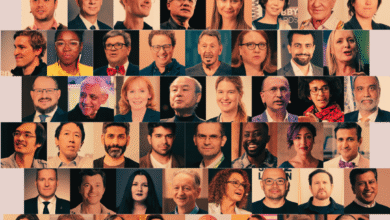The Future of Artificial Intelligence

As AI continues to evolve, several ambitious “moonshot” ideas are emerging to address current limitations and push the boundaries of what artificial intelligence can achieve. One such moonshot is post-Moore computing1, which aims to move beyond traditional von Neumann architecture as GPUs and TPUs near their physical and practical limits.
With AI models becoming increasingly complex and data-intensive, new computing paradigms are needed. Innovations in neuromorphic computing2, which mimics the neural structure of the human brain, are at the forefront of this transition. Also, optical computing3, which uses light instead of electrical signals to process information, offers promising avenues for enhancing computational efficiency and scalability.
Another significant moonshot is the development of a distributed Internet of AI4, or federated AI, which envisions a distributed and decentralized AI infrastructure. Unlike traditional centralized AI models that rely on vast data centers, federated AI operates across multiple devices and locations, processing data locally to enhance privacy and reduce latency.
By enabling smartphones, IoT gadgets and edge computing nodes to collaborate and share insights without transmitting raw data, federated AI fosters a more secure and scalable AI ecosystem. Current research focuses on developing efficient algorithms and protocols for seamless collaboration among distributed models, facilitating real-time learning while maintaining high data integrity and privacy standards.
Another pivotal area of experimentation addresses the inherent limitations of the transformer architecture’s attention mechanism5. Transformers rely on an attention mechanism with a context window to process relevant parts of the input data, such as previous tokens in a conversation. However, as the context window expands to incorporate more historical data, the computational complexity increases quadratically, making it inefficient and costly.
To overcome this challenge, researchers are exploring approaches such as linearizing the attention mechanism or introducing more efficient windowing techniques, allowing transformers to handle larger context windows without the exponential increase in computational resources. This advancement would allow AI models to better understand and incorporate extensive past interactions, leading to more coherent and contextually relevant responses.
Imagine starting your day in 2034. A voice-controlled intelligent assistant, connected to every aspect of your life, greets you with your family meal plan for the week, tailored to everyone’s preferences. It will notify you of the current state of your pantry, ordering groceries when necessary. Your commute becomes automatic as your virtual chauffeur navigates the most efficient route to work, adjusting for traffic and weather in real-time.
At work, an AI partner sifts through daily tasks and provides you with actionable insights, help with routine tasks and acts as a dynamic, proactive knowledge database. On a personal level, AI-embedded technology can craft bespoke entertainment, generating stories, music or visual art customized for your tastes. If you want to learn something, the AI can provide video tutorials tailored to your learning style, integrating text, images and voice.
Source link




